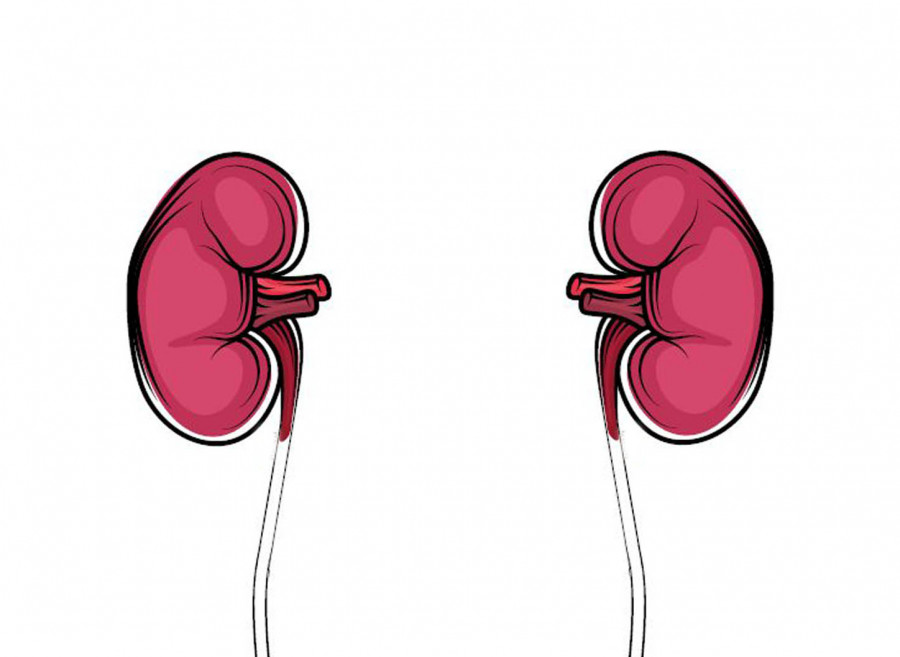The kidneys are two bean-shaped organs in the renal system situated below the rib cage. The size of each kidney is about a fist of a hand. They act as filters in the body. They help to pass out the wastes and extra water of the body in the form of urine. The kidneys filter the blood before returning it back to the heart.
The kidneys are one of the most vital organs in the body. They perform several critical functions to maintain the proper functioning of the other vital organs and keep the body on its optimum balance, and these significant roles of the kidneys include the following:
- Filter and regulate the minerals from blood.
- Maintain the overall state of fluids like water balance, acid-base balance, and electrolyte balance.
- Remove from the body the waste products of food, toxic substances, and medications.
- Generate hormones — “erythropoietin”, that aid in the production of red blood cells.
- Controls blood pressure.
- Supports bone health by activating Vitamin D.
What is End-Stage Renal Disease (ESRD)?
End-Stage Renal Disease (ESRD) is a crucial medical condition of the kidneys. End-stage renal disease is the final stage of chronic kidney disease. This means that the kidneys ceased to perform the normal functions permanently.
The person with end-stage renal disease may require a regular session of a life-long dialysis or kidney transplant to sustain life.
Kidney disease is usually progressive. The performance of the kidney is below 10% of its normal ability for people with ESRD. This may mean that the kidney is hardly functioning or already ceased to function.
Signs and Symptoms
The signs and symptoms of the kidney remain unapparent until the occurrence of irreparable damage. To mention some usual signs and symptoms of kidney disorder:
- Nausea
- Vomiting
- Fatigue and weakness
- Decreased in urinary output
- Trouble sleeping
- Loss of appetite
- Muscle cramps
- Muscle twitches
- Chest pains due to fluid buildup in the heart
- Shortness of breath due to fluid buildup in the lungs
- Problem with focus and concentration
- Skin dryness and itchiness
- Swelling of hands and feet
- Uncontrolled high blood pressure
Causes
Most often with kidney diseases, it is usually the nephrons that become defective. The nephrons are the filtering tiny unit of the kidneys. The defective nephrons may result in poor filtration of blood, which eventually may result in ESRD.
- Due to older age
- Recurrent or chronic urinary tract infections
- Presence of kidney stones causing long-term blockage of the urinary tract
- Vesicoureteral reflux — the abnormal flow of urine from the bladder back to the kidneys
Risk Factors
There are numerous risk factors can contribute to the progression of chronic kidney disease to end-stage renal disease, like:
- Use of tobacco
- Diabetes — Type 1 and Type 2
- Congenital abnormalities like Alport syndrome
- High blood pressure
- Certain types of cancer like liver cancer
- Prostate problems
- Interstitial nephritis — inflammation of the tubules in the kidney
- Pyelonephritis — inflammation of the kidney
- Glomerulonephritis — inflammation of the filters in the kidney
- Certain autoimmune conditions like lupus
- Polycystic kidney disease (PKD)
- African-American descent
Diagnosis
There are several medical tests to check the kidney functions and establish the diagnosis of end-stage renal disease which include:
- Urinalysis
This test can detect the protein and blood in the urine. The presence of these substances may be indicative of kidney disease.
- Blood Tests
Some blood analysis may be requested by the doctor from an ESRD patient, as follows:
- Blood Urea Nitrogen (BUN) Test
This test checks the level of nitrogen in the blood that comes from the waste product of urea. The presence of urea in the blood indicates the defective filtration of the kidneys.
- Creatinine test
This test checks the creatinine level in the blood. Creatinine is a waste product that the kidneys should remove from the body.
- Estimated Glomerular Filtration Rate (eGFR)
This test gives the gauge how well the kidneys filter waste products.
- Imaging Tests
A number of imaging tests may be required by the doctor to evaluate the size and structure of the kidneys; and check for any abnormalities, as follows:
- Ultrasound
- Computed Tomography (CT) Scan
- Magnetic Resonance Imaging (MRI)
- Kidney Biopsy
A biopsy sample of kidney tissue may also be done to examine and determine specifically the type of kidney disease that a person may have and assess the extent of kidney damage.
Complications
As said, kidney disorder is irreversible. It is a lifetime disease. Listed down are the possible complications of ESRD that may affect any part of the body and these may include:
- Poor immune response that makes a person prone to infection.
- Fluid retention — this can cause the swelling of the legs and arms such in the case of pulmonary edema (fluid in the lungs) and high blood pressure.
- Cardiovascular disease — a problem with the heart and the blood vessels.
- Pericarditis — an inflammation of the pericardium that covers the heart.
- Hyperkalemia — an increased level of potassium in the blood which is critical for the heart and detrimental to life.
- Anemia — low hemoglobin that may have resulted from erythropoietin deficiency
- Osteoporosis — weak and brittle bones with an increased risk of bone fractures.
- A defective central nervous system that may cause seizures, difficulty concentrating, and other behavioral changes.
- Complications in pregnancy may pose a significant danger to both the mother and the developing fetus.
- End-stage renal disease — irreparable damage to kidneys that may require either dialysis or a kidney transplant to sustain life
- Decreased in libido, reduced fertility, or erectile dysfunction
Prevention
The person with kidney problems may slow down the progressive deterioration of the kidney by choosing to have a healthy lifestyle, as follows:
- Get regular checkups to monitor the performance of the kidney
- Take regularly the prescribed medications
- Lose or maintain the weight per BMI
- Refrain from smoking or use tobacco products
- Eat a nutritious, low-sodium balanced diet
- Engage in a regular fitness exercise
- Control the blood pressure
- Check the cholesterol levels as regularly as possible
- Control the blood sugar level
Treatment
There are only two available treatments for a person with end-stage renal disease (ESRD), namely:
- Dialysis
Dialysis is a treatment that purifies, filters, and removes the waste products, excess water, and excess salts in the body. This dialysis procedure in a way acts as a substitute for the kidney’s function of keeping the electrolytes and fluids in the body on its optimum balance.
There are 2 methods of performing dialysis:
- Hemodialysis
A type of dialysis that uses a machine that acts as the “artificial kidney.” The treatment is conducted in a dialysis center
- Peritoneal dialysis
A type of dialysis treatment that uses the lining of the abdomen – “peritoneum or peritoneal membrane,” to filter the blood.
- Kidney Transplant
This is the last recourse of a kidney patient. When the kidneys of the patient totally and permanently cease to function, in order to sustain life, the patient may be advised to undergo a kidney transplant – a replacement of kidney through a kidney organ donor.
 Lifeyet News Lifeyet News
Lifeyet News Lifeyet News





